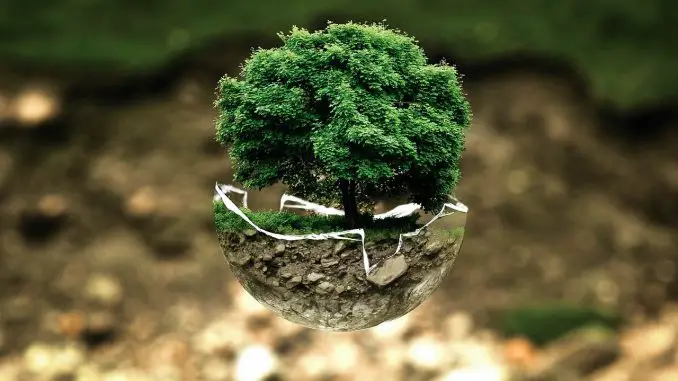
Now it’s time for the Christmas tree to be thrown out This Christmas, many households had a Christmas tree, which means tons of trees that are being thrown out.
As our Christmas trees have grown, they have captured carbon dioxide from the atmosphere which has been transformed into bark, branches and pine. In this way, the Christmas tree has contributed to a reduction in the content of carbon dioxide. The energy from a fir which is then fired in heating plants corresponds to electricity sufficient to run three to four washing machines.
In a forest that is used in a sustainable way, new trees grow at the same rate as others are harvested or die. And the world’s forests must be used in a way that is economically, socially and environmentally sustainable in the long term. But in many parts of the world, the forests are being destroyed – it is cut down faster than new pods grow up and the forest’s values are not utilized. The amount of carbon dioxide in the atmosphere increases, which contributes to the greenhouse effect and increases the earth’s average temperature. Carbon dioxide emissions from forest degradation account for almost 20 percent of all greenhouse gases emitted into the atmosphere – that’s more than the entire transport sector emits. It is mainly the propagation of large-scale agriculture that drives deforestation in the tropical parts of the world.
At the same time, 1.6 billion people in the world depend on forests for their survival – for fuel and feed, for example. The majority of these people live in poverty.
It is possible to reduce the pressure on the natural forests and still ensure that those who need access to the trees. Instead of cutting down the natural forest, farmers can grow trees together with crops on their farms – a method known as agroforestry. The trees provide fruits, nuts, animal feed, wood and building materials. The trees also make the farmers’ crops grow better and yield larger harvests; the trees prevent fertile soil from being washed away during heavy downpours, provide shade against strong sun and the roots bind nitrogen which feeds the soil.
In the four countries around Lake Victoria in eastern Africa, people face different challenges, depending on the climate and the geographical conditions right where they live. In some areas, drought is the biggest challenge, in others it is heavy rain that causes landslides. But all the people we work with have one thing in common, as do the majority of the people in these countries are the small-scale farmers. Their livelihood is determined by whether or not they succeed. They live in poverty. They are already affected by climate change. And with the help of the trees – and yours – they can move towards a brighter future.
So to those who bought a Christmas tree this year. There are two simple things you can do to keep your fir tree from spreading light and joy. You can hand in your fir to be recycled as energy in heat plants. The obsolete Christmas tree is then used as a substitute for oil, coal and other environmentally unfriendly types of energy. And then you can plant a tree through the Vi forest. Replace one tree with another! Preferably with several.
Leave a Reply